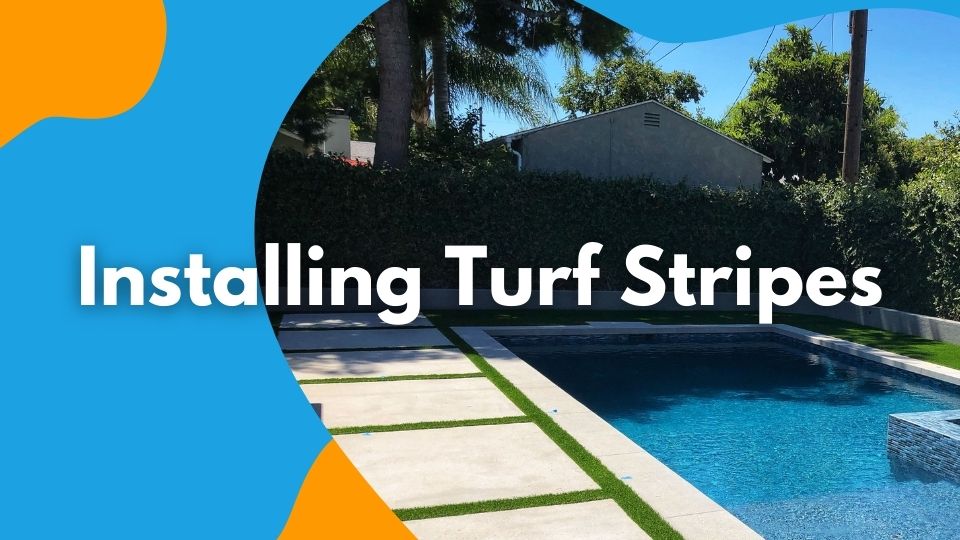
Discover how customers are enhancing their property by installing turf between pavers and concrete slabs. Learn where this works best, and decide if this is the right...
Concrete is a great cost-efficient material for your driveway, patio, or backyard renovation that perfectly aligns with modern and traditional house designs.
Learn about different types of concrete. Review the shortcomings and see the benefits. Discover the most common issues with concrete installation and find out how to prevent them. Browse creative concrete driveway and patio ideas. Compare concrete to pavers. Calculate the price for your backyard renovation project with concrete in Los Angeles, California.
Summary:
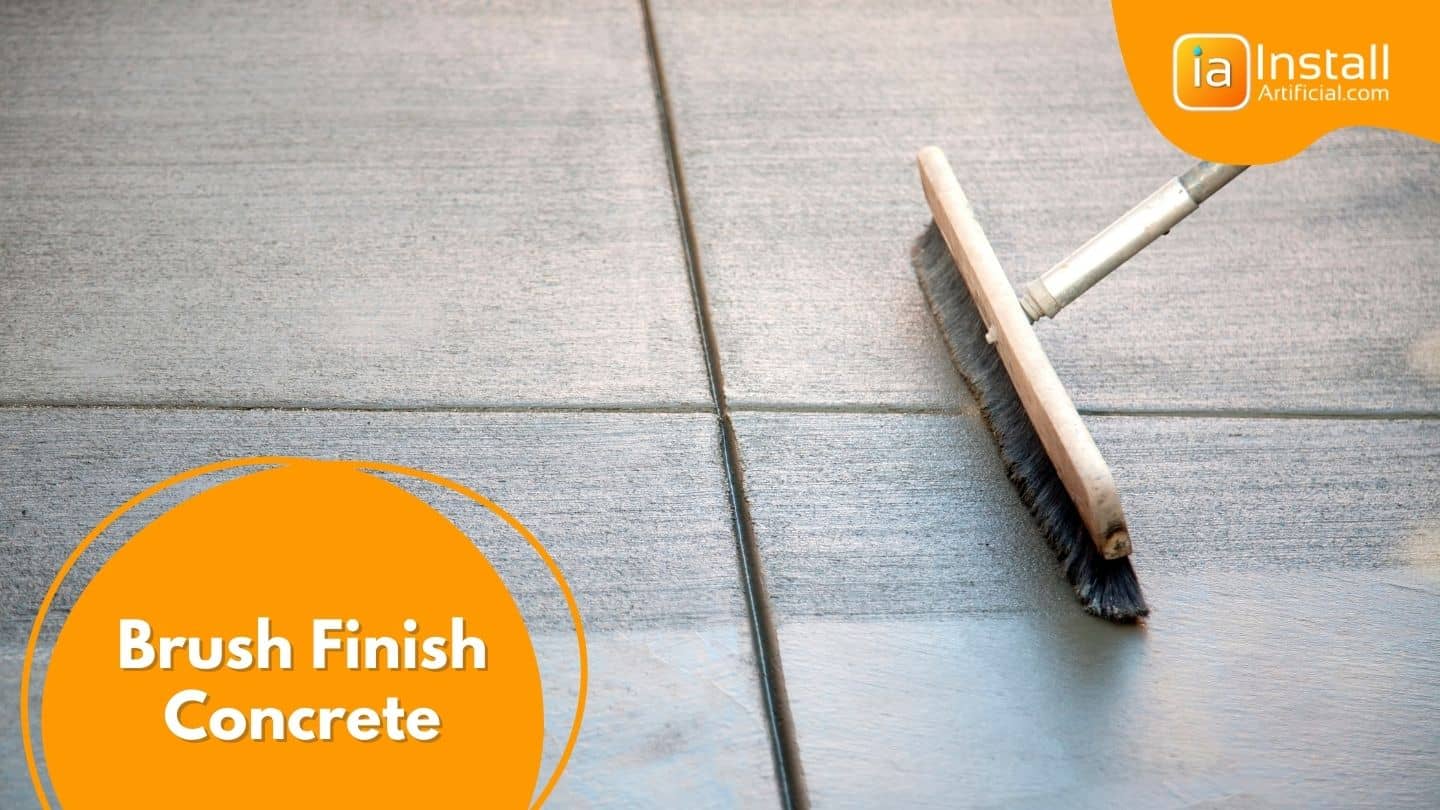
Brush-finished concrete, also known as broom-finished concrete, is the most affordable, simple, and cost-effective choice for backyard renovation. By using a broom to create a textured surface covered with light ridges, homeowners can enjoy a slip-resistant surface that is perfect for pool decks, pathways, and outdoor patios. Smooshed concrete cuts not only provide a safe walking surface but also add a touch of rustic charm to any backyard.
Advantages: Cost-effective, slip-resistant, simple and classic look, easy to maintain.
Disadvantages: Abrasive, not comfy for the bare feet walk.
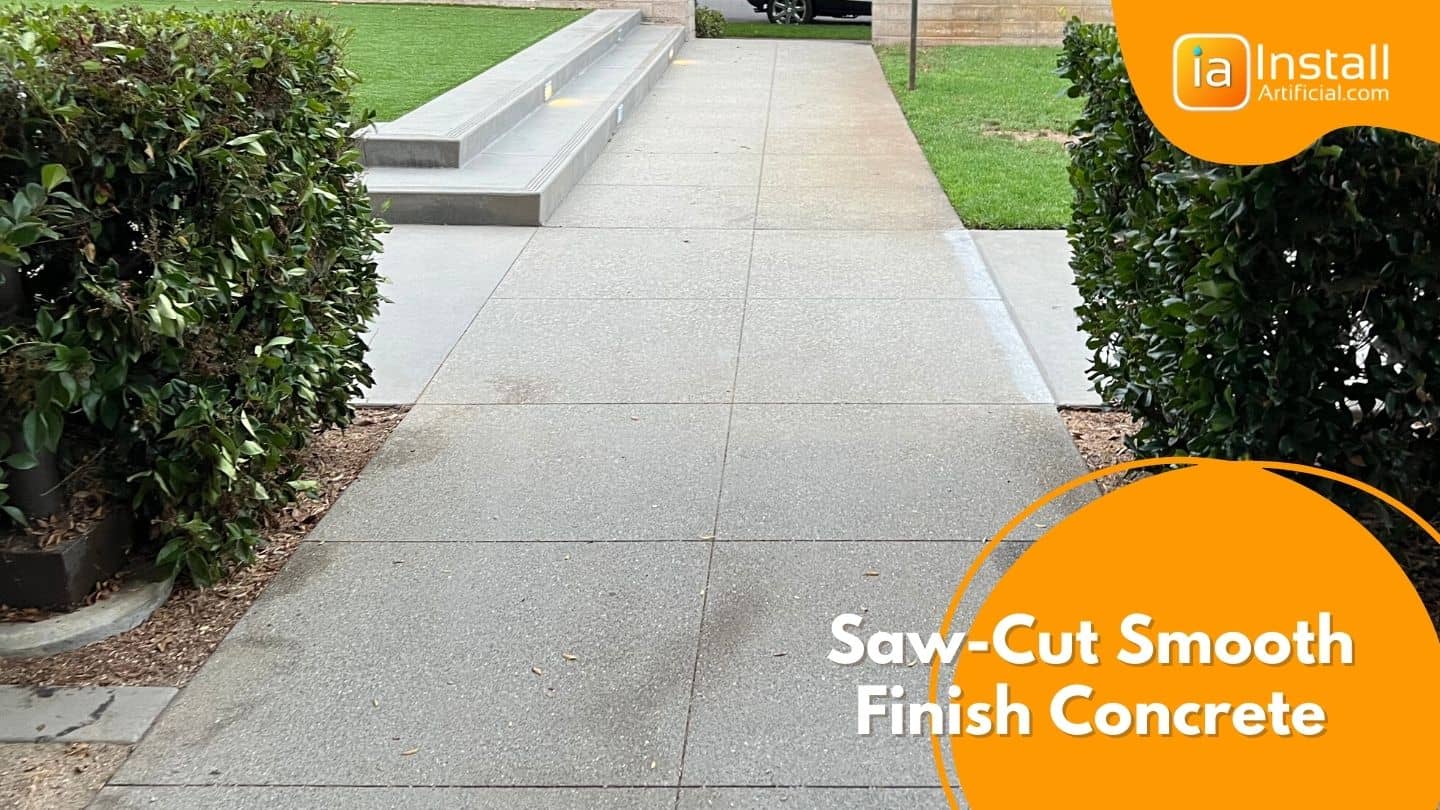
Smooth-finish concrete is modern, elegant, and comfy for barefoot walk concrete patios. It works great around the pools. You could see smooth concrete at shopping malls. Often, with sparkling additions, smooth concrete is a favorite choice for upscale venues. It is often installed with saw-cut joints.
Advantages: Great look and feel. Not abrasive. Non slippery.
Disadvantages: Skilled concrete installer needed. Requires more work to cut and polish. Reveals marks and damage.
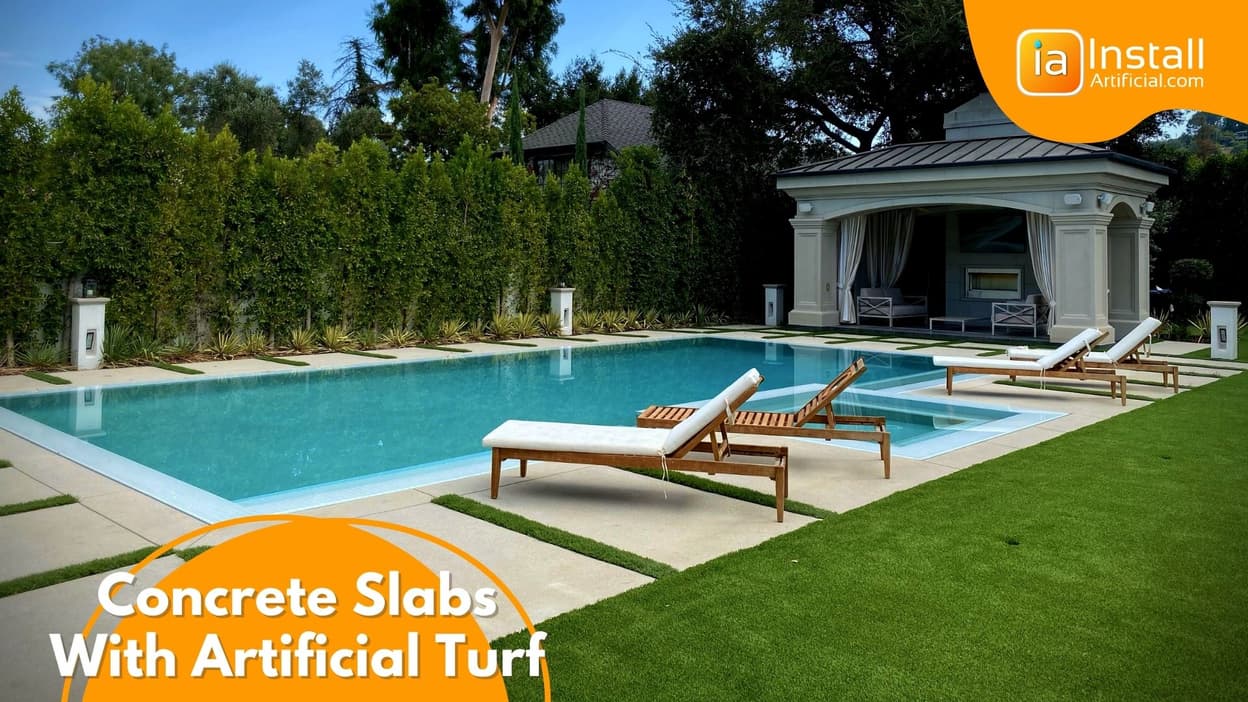
This type of driveway and backyard concrete is trendy. It looks great and meets code requirements to provide a permeable surface for water preservation. Turf breaks down dull surfaces, providing a designer look and a useful space.
Advantages: Adds character and unique flair to the backyard, more design options than traditional broom-finished concrete, slip-resistant, easier than stone.
Disadvantages: It can be labor-intensive, and intricate patterns may require skilled contractors.
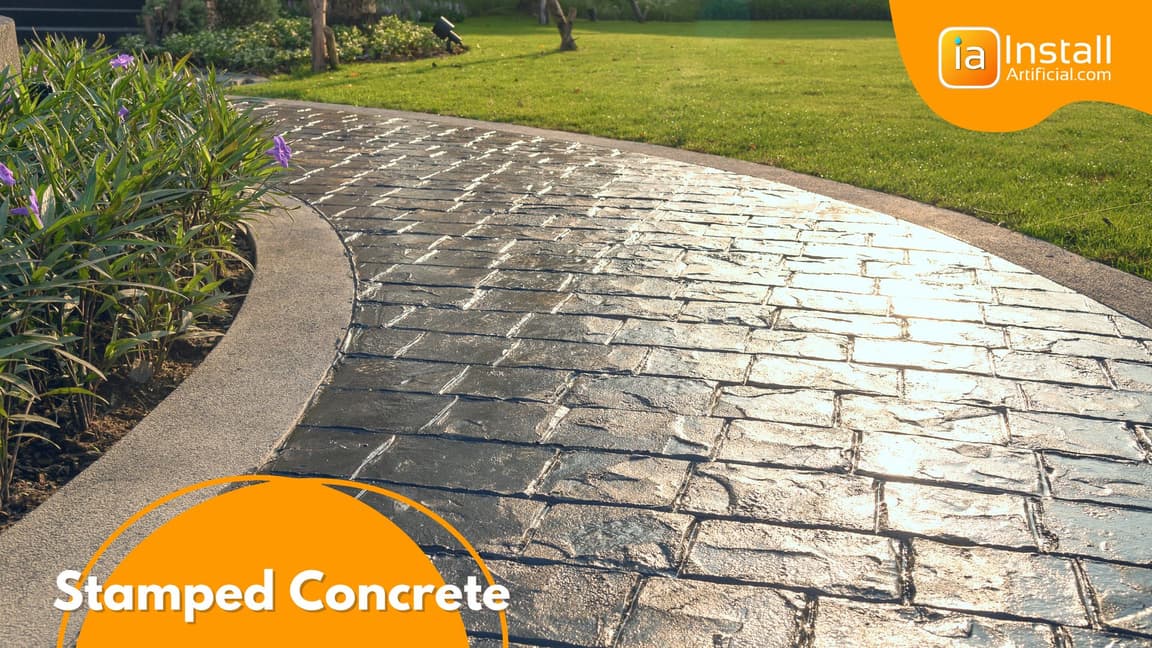
If you desire the look of expensive natural materials like stone, brick, or wood at a more affordable price, stamped concrete is the perfect choice during backyard renovation in Los Angeles. During installation, contractors use special stamps to imprint patterns and textures onto the decorative concrete before it fully sets. The result is a visually appealing surface that mimics the appearance of expensive materials without the associated maintenance and cost. Stamped concrete is ideal for walkways, driveways, and concrete patios, providing a cohesive and stylish design to any backyard.
Advantages: Cost-effective alternative to expensive pavers or brick, wide range of design options, durable and long-lasting, low maintenance.
Disadvantages: Requires professional installation, the potential for color fading over time if not properly sealed.
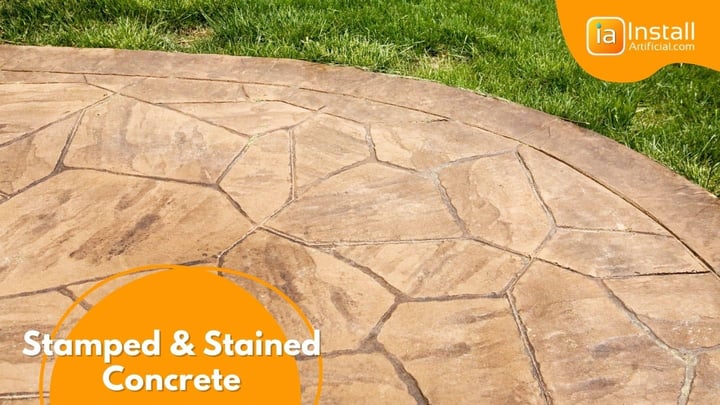
For homeowners seeking vibrant colors and artistic elements in their backyard renovation, stained concrete is the answer. By applying acid-based or water-based stains to the cured concrete, the surface is transformed into a work of art. The stains penetrate the concrete, creating unique marbling effects and semi-translucent tones that react with the concrete's chemical composition. With a broad spectrum of colors available, stained concrete can match any backyard theme or style.
Advantages: A broad spectrum of colors, customizable and artistic design options, enhances the visual appeal of the backyard, looks just like pavers for less money.
Disadvantages: Requires skilled application to achieve desired effects, staining process can be sensitive to environmental conditions, periodic resealing may be necessary.
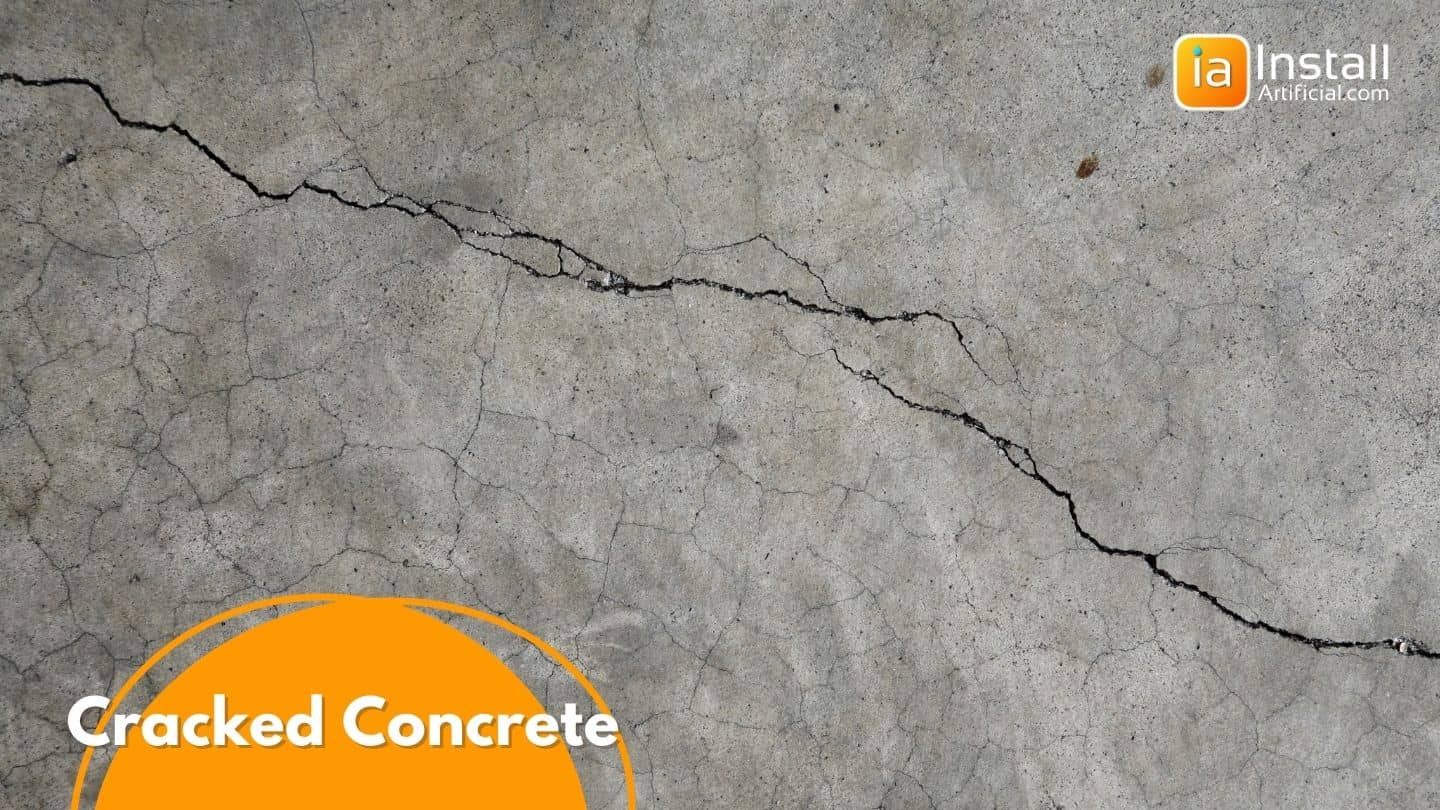
Concrete is a durable material, but unfortunately, there is no warranty against cracks. In commercial applications, you may notice small cracks, which can be attributed to the lack of a firm base for the concrete patio. Many installers choose to cut corners and pour the concrete directly on top of the soil. However, this can lead to problems as the soil does not provide proper drainage and can easily be eroded, causing the concrete to shift and crack under pressure.
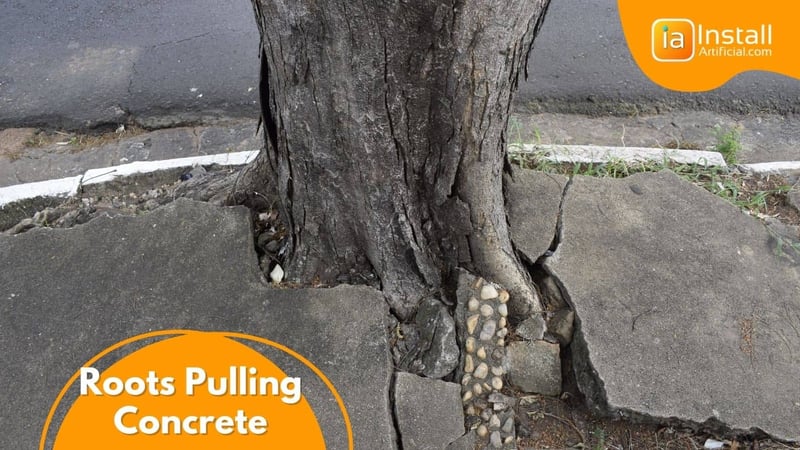
Tree roots have the potential to exert enough force to dislodge concrete, creating potential trip hazards. Identifying these areas is crucial, as they should be promptly addressed by cutting the concrete to ensure safe passage.
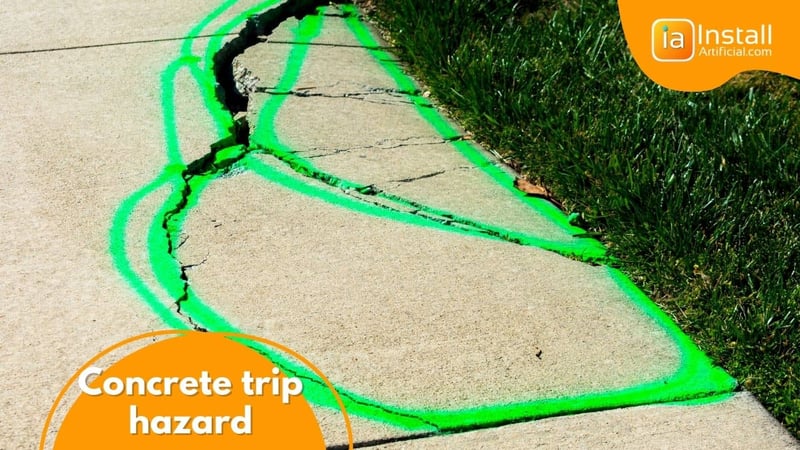
Once the concrete has been poured and the finishing touches have been made, there is little room for adjustments. If any mistakes were made by your contractor during the process, it can be challenging to rectify them. Unlike pavers, which can be easily reinstalled or repaired, concrete does not offer the same flexibility for adjustments and modifications.
Concrete reflects a lot of sunlight. When a concrete patio does not have furniture, turf or other materials and items that break down reflection, it is hard to look at a concrete backyard without sunglasses.
The average price of a concrete patio varies from $12 to $25 per sq. ft. when doing 600 square feet or more. This costs less than the installation of pavers. When the shape is complex and involves stairs, planter walls, and stepping stones, the price of concrete can be up to 50% cheaper than the price of a paver patio. Most people prefer concrete due to its lower price point.
Concrete customization is one of the greatest advantages of using concrete for backyard renovation. Its versatility allows homeowners to pour and shape it to fit any size and layout, creating unique and personalized outdoor spaces. Working with contractors, homeowners can design custom patterns, textures, and even incorporate embedded objects like stones or glass, adding a touch of their own personality to their concrete surfaces.
Concrete is highly durable and weather-resistant, making it an excellent choice for outdoor applications. It can withstand harsh weather conditions, including extreme temperatures, rain, and UV exposure, without significant damage or deterioration. Properly sealed concrete surfaces are also less prone to staining and fading, ensuring that the backyard maintains its aesthetic appeal for years to come. However, know that concrete patios in earthquake areas like California could crack under pressure.
For environmentally conscious homeowners, concrete offers eco-friendly alternatives. Permeable concrete, also known as pervious or porous concrete, allows water to pass through, reducing runoff and aiding in groundwater replenishment. This environmentally friendly option helps prevent water pooling and can mitigate the impact of heavy rain on the landscape. It is a code to put permeable stripes in between concrete pavers in California to help replenish groundwater reserves. And besides that, concrete material is the easiest to recycle and reuse.
In addition to its durability and customization options, concrete can also be designed to accommodate integrated lighting features. Embedded LED strips or small accent lights can be incorporated into the concrete, not only adding a stunning visual element to the backyard but also enhancing safety and usability during evenings and nights.
Concrete's ability to retain heat makes it beneficial in cooler climates or during colder seasons. Homeowners can choose concrete surfaces in areas where they wish to spend time outdoors during evenings or shoulder seasons, as the material's heat retention can make the space more comfortable.
Over time, like any outdoor surface, concrete may show signs of wear and tear. However, the advantage of concrete is that it can be easily resurfaced to restore its original appearance. Minor cracks or imperfections can be repaired, and the surface can be rejuvenated with stain or overlays, extending its life and keeping the backyard looking fresh.
Concrete seamlessly blends with various landscaping elements, such as gardens, trees, and shrubs, serving as a clean and attractive backdrop that complements the natural beauty of the backyard. This creates an aesthetically pleasing and cohesive outdoor space.
Backyard renovation with concrete is a long-term investment in a property. The durability, low maintenance requirements, and timeless appeal of concrete surfaces add value to a home, making it an appealing feature for potential buyers in the future.
Creative Ways to Incorporate Concrete in Backyard Remodeling
Concrete offers endless opportunities for incorporating its versatility into various aspects of backyard design and modern homes. It's not just limited to ground surfaces; there are numerous creative ways to incorporate concrete into different elements, adding a touch of modernity to your outdoor space.
Concrete countertops are a stylish and functional addition to an outdoor kitchen. Customizable in shape and color, they provide ample space for food preparation and add an industrial chic element to the outdoor cooking area. With the ability to be cast in any shape or size, concrete countertops can be tailored to fit the specific needs and aesthetic preferences of homeowners. Whether it's a sleek and modern design or a more rustic and textured surface, concrete countertops offer versatility and durability that is unmatched by other concrete patio materials.
Also, the customizable color options allow homeowners to match the countertops to their overall outdoor kitchen theme, creating a cohesive and harmonious look and living space. The industrial chic element that concrete brings to the cooking area adds a touch of sophistication, elevating the overall design and functionality of your outdoor dining area.
Most often, you'll find concrete implemented in landscape renovation when building a concrete patio. Whether homeowners opt for one concrete slab or concrete pavers with artificial turf in between, building a patio with this type of hardscape can greatly improve the functionality of your space. Your new patio can be the smooth foundation for dining and lounging or even become an outdoor living room with the addition of a table and a few pieces of furniture. You can find concrete patio ideas online that not only provide functionality but really enhance the look of your property.
Concrete can be molded into various shapes and sizes, making it an excellent material for constructing fire pits and seating elements. Integrating concrete into these features ensures durability and a cohesive look with other concrete elements in the backyard. Concrete fire pits provide a safe and stylish way to enjoy outdoor fires, whether it's for cooking, warmth, or ambiance. The ability to mold concrete into custom shapes allows homeowners to create unique fire pit designs that suit their personal style. From sleek and modern designs to more rustic and natural-looking fire pits, concrete offers endless possibilities. In addition to fire pits, concrete seating elements such as benches and loungers can be seamlessly integrated into the backyard design. These concrete seating options not only provide functional seating but also add a touch of elegance to the outdoor space.
Sturdy concrete retaining walls offer both functionality and visual appeal while providing support for raised garden beds and planters. The versatility of concrete allows for the creation of customized designs that complement the house and overall backyard theme. Concrete retaining walls are not only functional but also add an element of visual interest to the backyard. They can be designed to match the style of the home and other concrete elements in the yard, creating a cohesive and harmonious look.
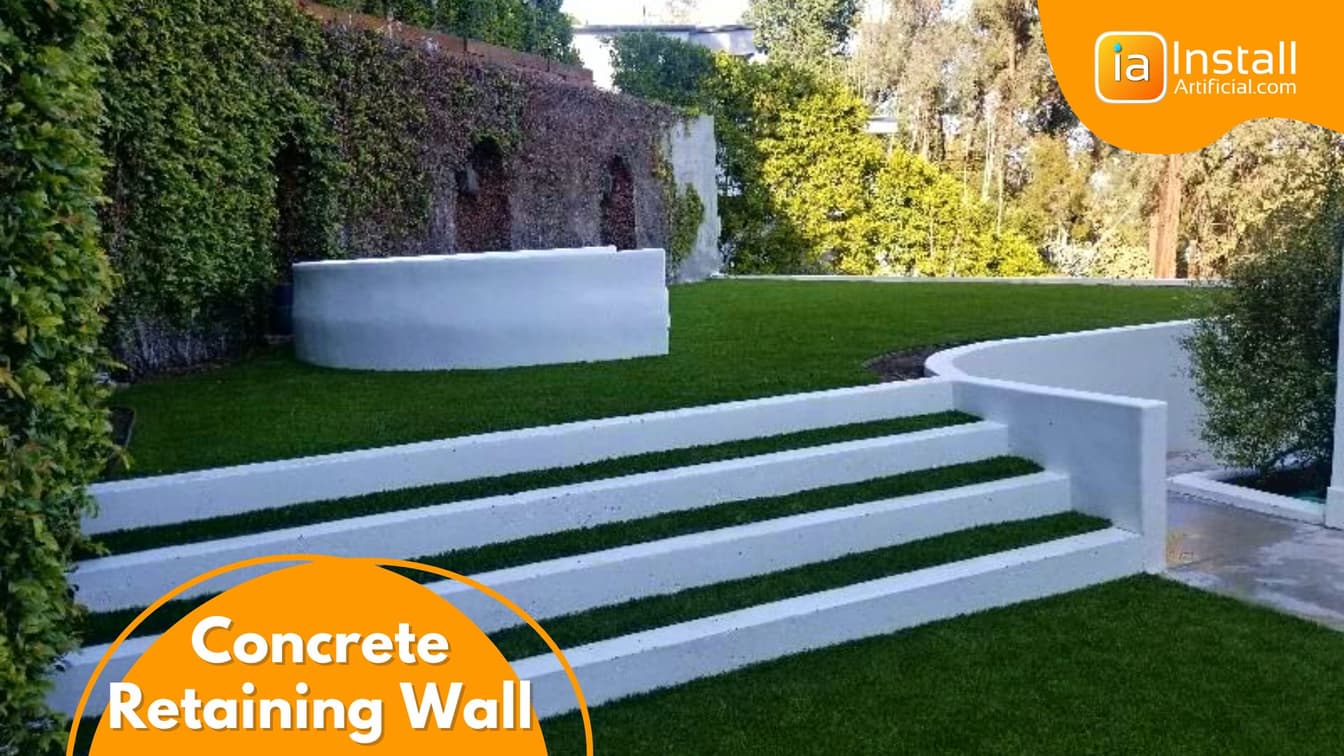
Additionally, concrete retaining walls can be customized with textured finishes or decorative patterns to add an extra layer of visual appeal. When it comes to raised garden beds and planters, concrete offers durability and longevity. The strength of concrete ensures that these structures can withstand the elements and the weight of the soil, providing a stable and secure environment for plants to thrive.
Concrete is perfect for designing water features such as fountains, ponds, and waterfalls. Its ability to take on various shapes and textures allows for the creation of unique and soothing water elements that enhance the backyard's tranquility. Concrete water features add a sense of serenity and relaxation to any backyard. From elegant fountains to ponds and cascading waterfalls, concrete can be molded and shaped to bring any water feature vision to life.
The versatility of concrete allows for the incorporation of various textures and finishes, creating a visually stunning experience. Whether it's a sleek and modern design or a more natural and organic look, concrete water features become focal points in the backyard, providing a soothing and inviting atmosphere.
Vertical concrete walls can be designed with built-in planters, creating vertical gardens that add a splash of greenery to small backyard spaces. These walls act as both functional dividers and decorative elements. Vertical gardens are a creative way to maximize space and bring nature into small backyard areas. Concrete walls with built-in planters offer a unique and stylish solution for homeowners looking to incorporate greenery into their outdoor spaces.
These walls can be designed in various shapes and sizes, allowing for customization to fit any backyard layout. By integrating planters directly into the concrete walls, homeowners can create a vertical garden that is both aesthetically pleasing and functional. The combination of concrete and plants creates a beautiful contrast and adds visual interest to the backyard. Additionally, these vertical gardens act as dividers, creating separate areas within the backyard and adding privacy and structure to the space.
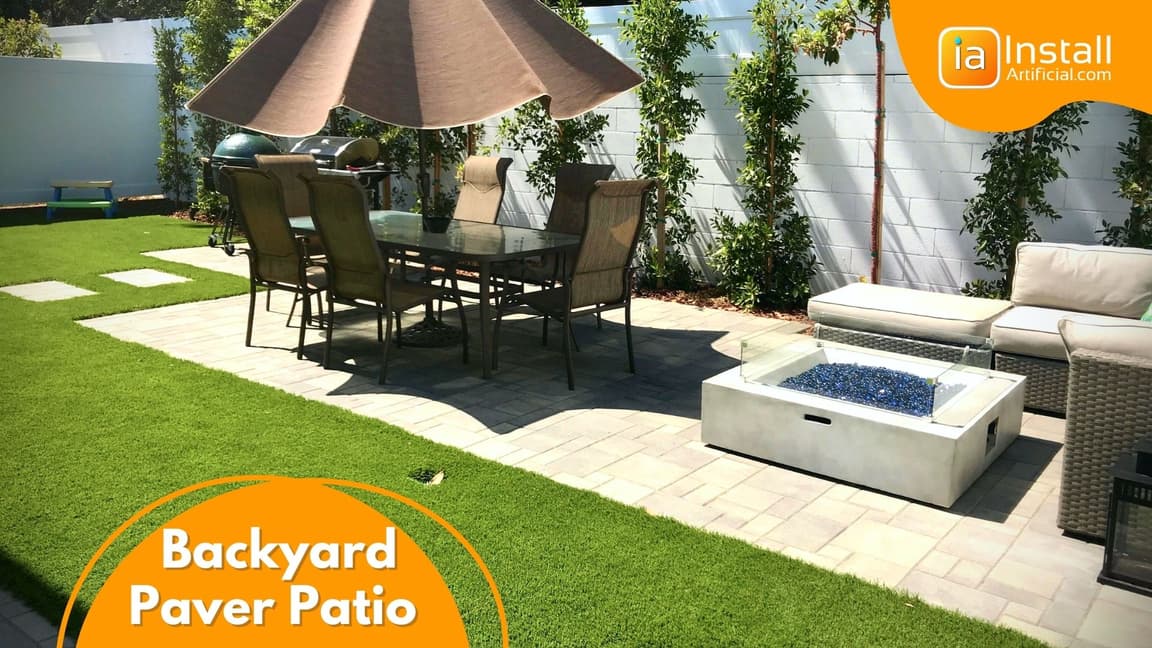
Now that we have explored the wide range of possibilities offered by concrete, let's take a deeper dive into how it compares to pavers, another popular and budget-friendly material known for its smooth finish.
Concrete offers the flexibility of being poured on-site, allowing for custom shapes and sizes. On the other hand, paving stones are pre-fabricated units that interlock during installation. Both options require professional installation; concrete is less labor intensive than paving stones due to pumping and fast setting process. However, the crew is limited with time to finish the poured area in one day. Full cure time for concrete typically takes around 28 days.
Concrete provides structural stability to designer elements such as stairways or retaining walls. Even though there is more styles and design options with pavers, bricks and stones, concrete offers plenty of solutions for modern houses and modern designs.
When it comes to maintenance, concrete surfaces have the advantage of being easier to clean and maintain compared to a paver patio or surface. This is because with concrete, there are less joints or spaces for dirt and weeds to accumulate. Regular sealing can enhance the durability and appearance of both concrete and pavers.
Both concrete and pavers are durable choices for backyard surfaces. However, well-installed and well-maintained concrete can have a longer lifespan compared to individual pavers, which may shift over time due to soil movement.
In terms of cost, concrete is generally more cost-effective than pavers, especially for larger areas and areas with difficult access. The individual units and installation complexity of pavers can make them more expensive. However, pouring concrete is typically more costly in small areas so if your space is small you may find installing pavers to be the best option to save money.
By considering these factors, homeowners can make an informed decision between concrete and pavers for their backyard renovation project. When choosing between concrete and pavers, think about the specific needs of your backyard project, the desired design aesthetics, and the available budget.
Concrete possesses immense strength and durability. However, it is crucial to pour it correctly over a well-prepared surface and ensure meticulous attention to detail during the finishing process.
Frequently, during the installation process, concrete installers neglect to remove the sub-grade soil and compact the gravel and class II road base material in violation of city codes, which is crucial for ensuring proper concrete installation. As a result, the soil and gravel settle, creating hollow spaces beneath the concrete, leading to concrete sliding and cracking. However, reinforcing the concrete with fiberglass is a cost-effective solution that provides additional protection against cracks.
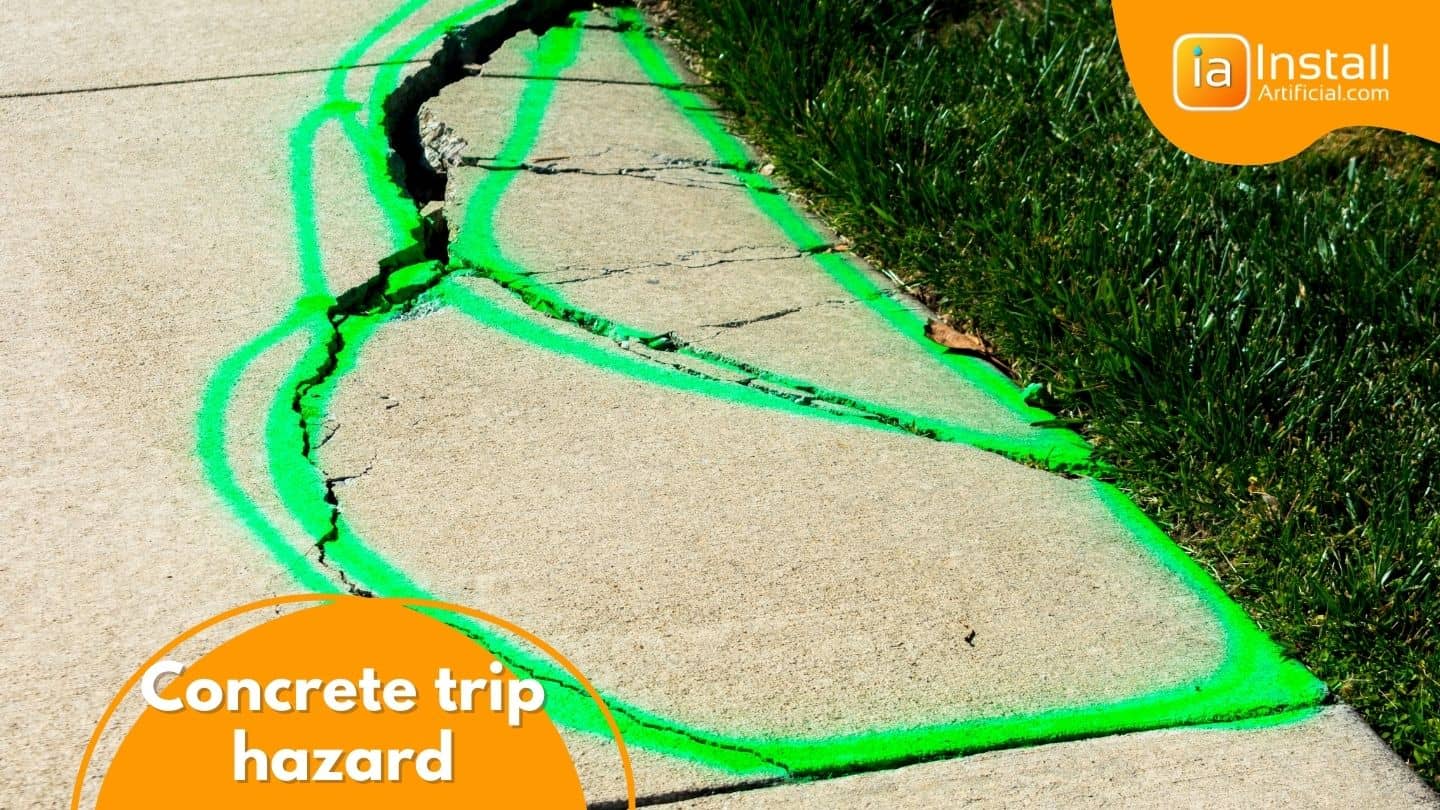
When the rebar is exposed near the surface, homeowners can easily notice the corrosion. To prevent this issue, it is essential to place the rebar in the middle of the concrete and ensure that it is approximately 2 inches away from the surface.
It is not uncommon to encounter uneven edges, rough corners, lackluster concrete patterns, and inconsistent pouring during concrete installations. While the process itself is not overly complicated, it requires a skilled crew equipped with the right tools, high-quality materials, patience, and experience to achieve the correct mix and pour.
In conclusion, concrete offers endless design possibilities for backyard renovation, whether it's the simplicity of smooshed concrete cuts, the decorative appeal of stripes, the imitation of natural materials with stamped concrete, or the vibrant colors of stained concrete. Each concrete application adds its unique charm and functionality to outdoor spaces for less. Concrete is great for cost-effective backyard renovation projects and modern home designs.
If you are planning to install concrete in Los Angeles and Southern California, we can help.

Discover how customers are enhancing their property by installing turf between pavers and concrete slabs. Learn where this works best, and decide if this is the right...
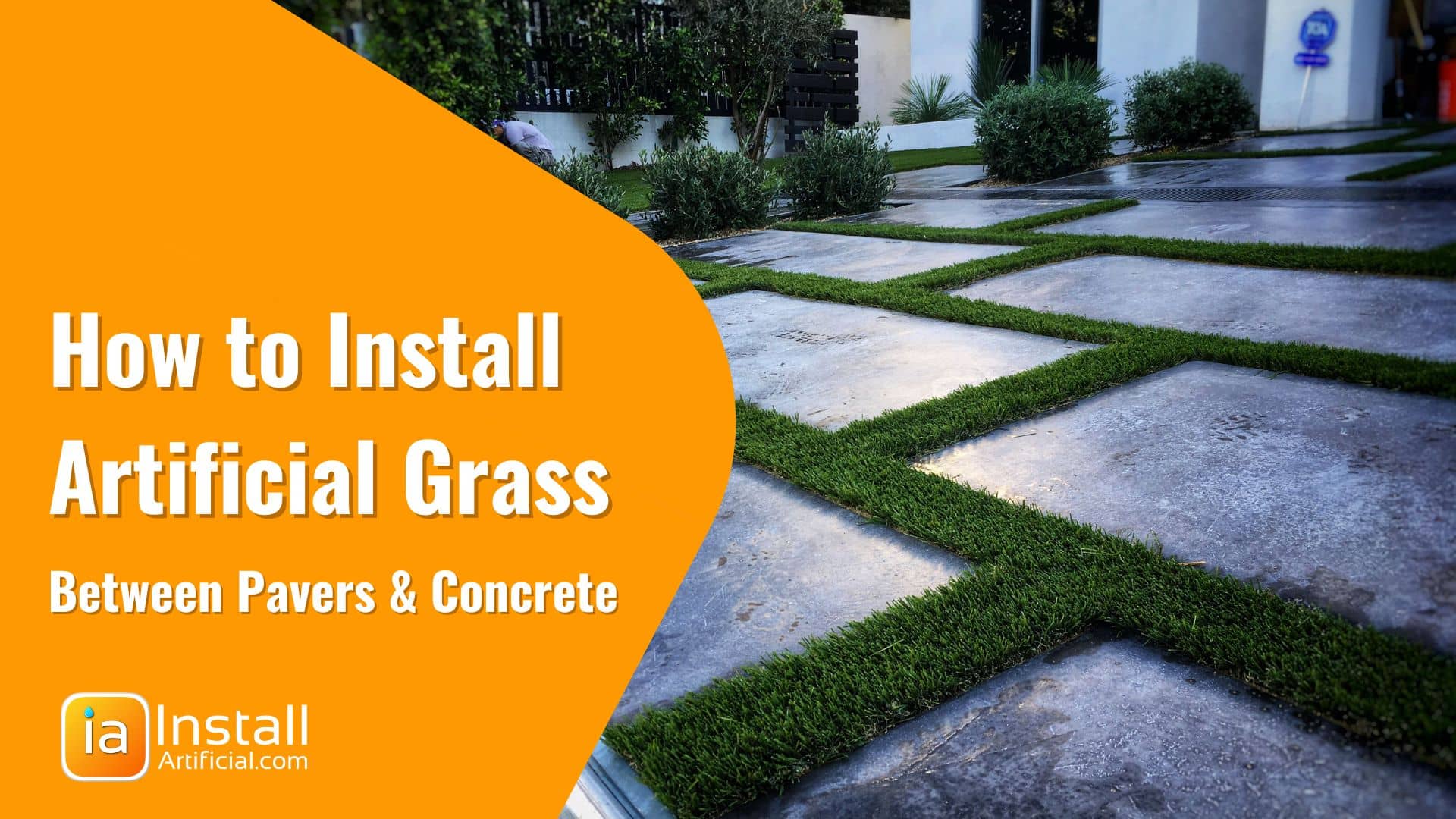
Synthetic turf between concrete slabs or pavers has become a trending home edition on driveways, patios, and backyards. Installing plush artificial grass is the perfect...